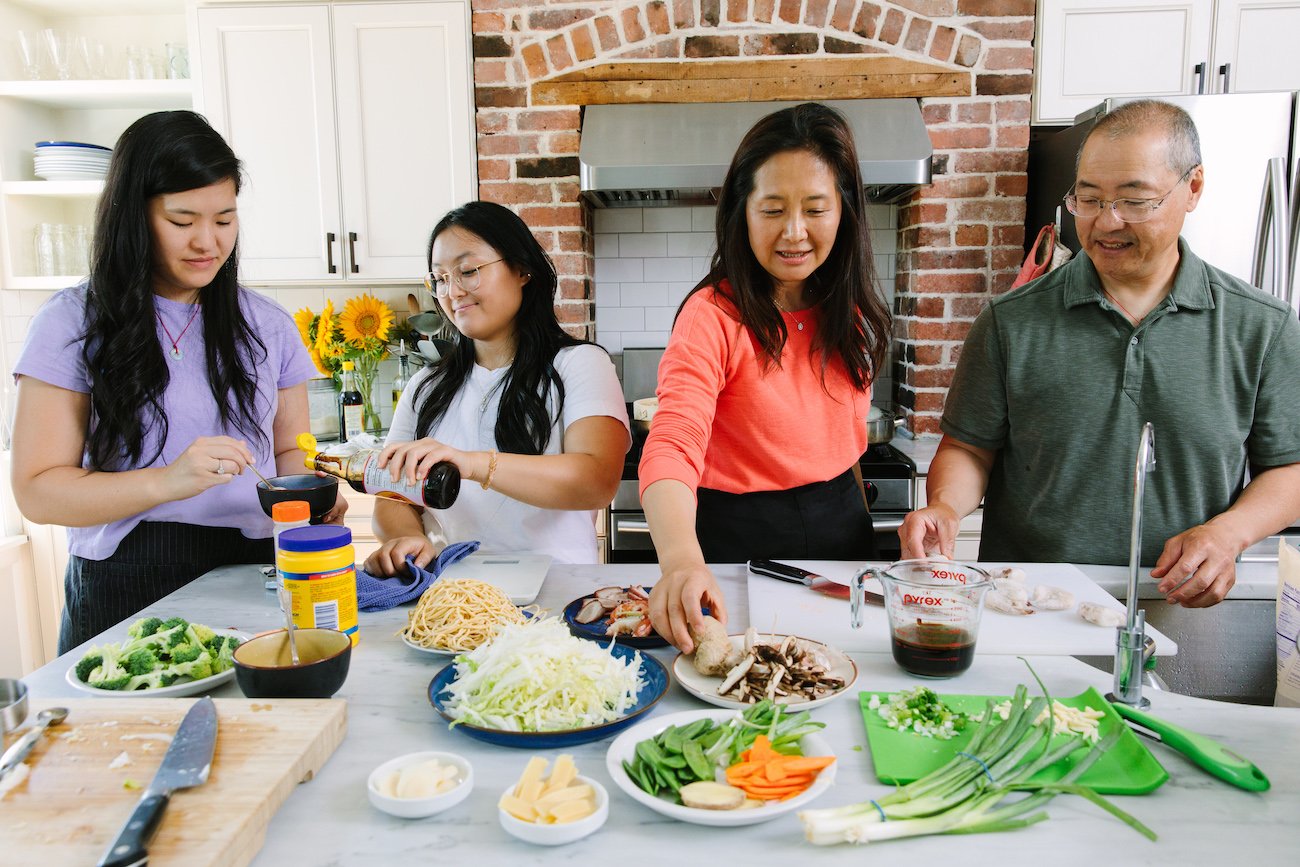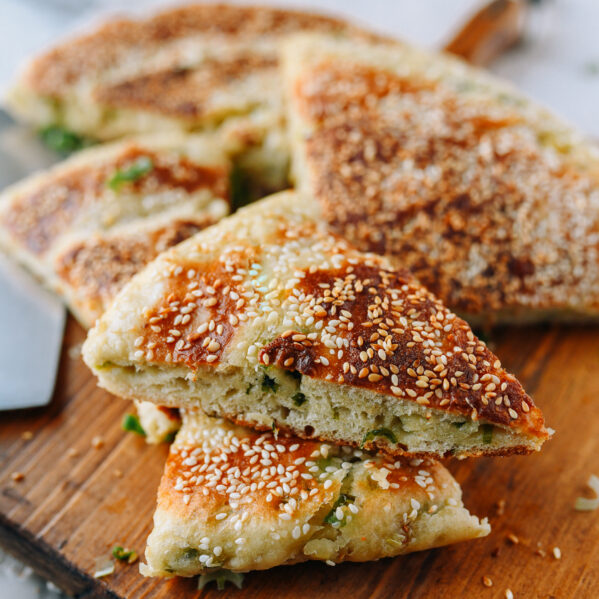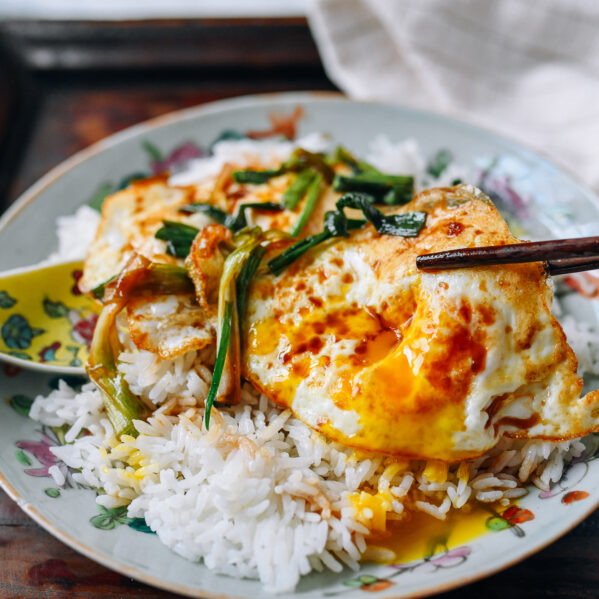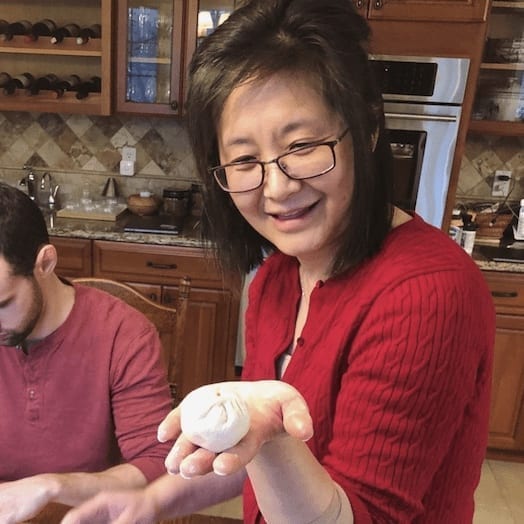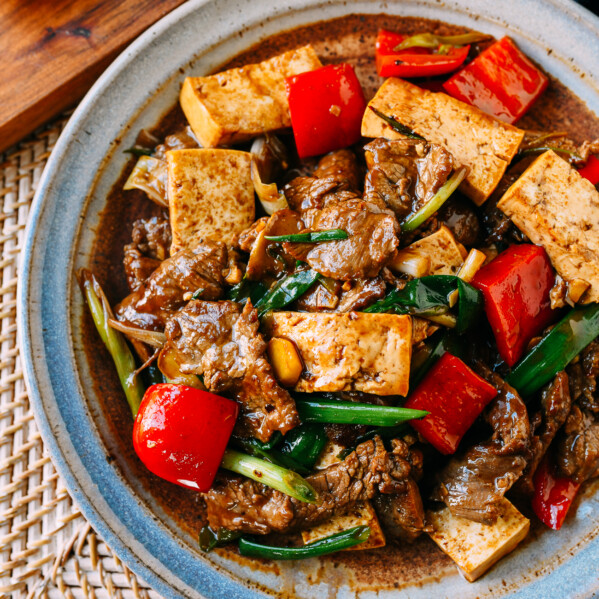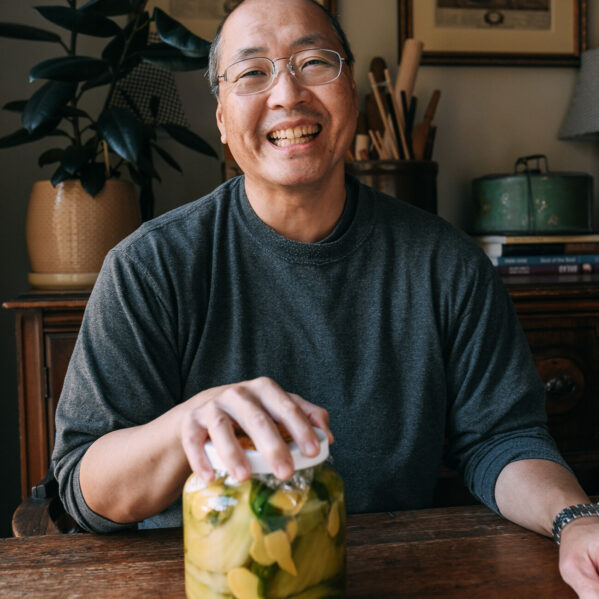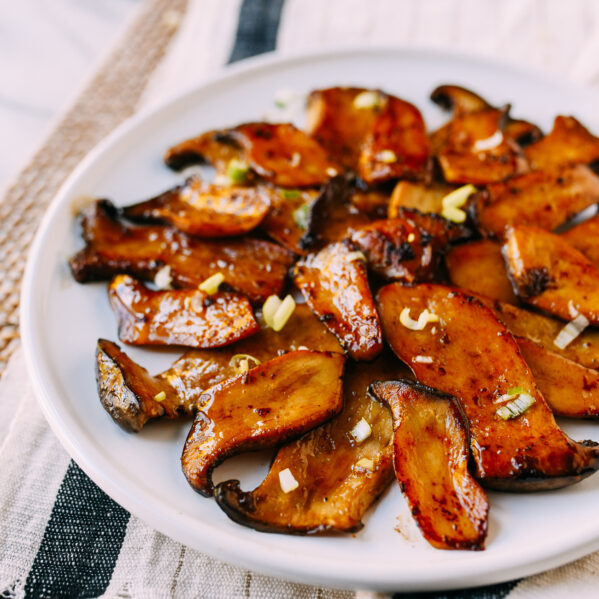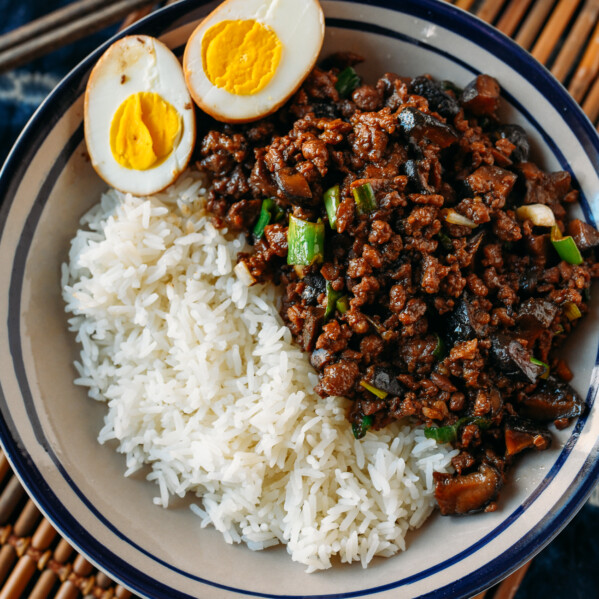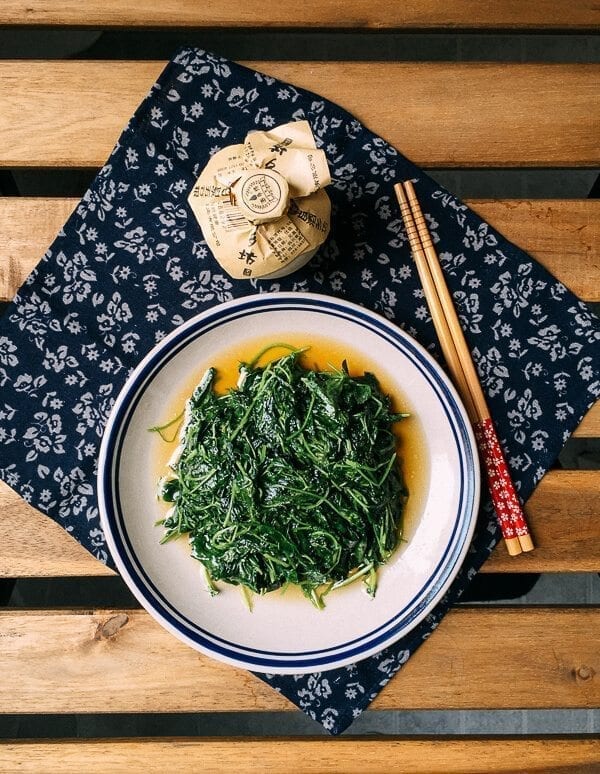
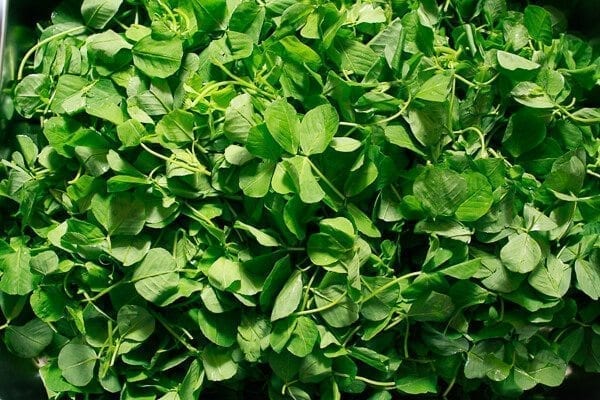 I remember when we were living in Beijing, we seldom came across edible clover, but in Shanghai, it is everywhere in markets and restaurants during the spring months. Cao Tou preparation is very specific and very simple, using a good amount of oil, salt, and Bai Jiu, a popular Chinese sorghum-based grain alcohol. Bai Jiu varies in strength, and many say that you must use a brand that is at least 46% alcohol!
In my opinion, the Bai Jiu is what makes the edible clover really delicious. After tasting the dish, my first thought was that it tasted like fermented bean curd. That’s when I realized that bai jiu wine is probably used to make fermented bean curd!
So if you really can’t find bai jiu, then use 1 teaspoon of fermented bean curd as a substitute. A small amount of light soy sauce is optional (some locals use only salt), but I prefer the dish with that splash of soy sauce.
We have more information about edible clover (cao tou) on our Chinese leafy green vegetables page, but if you’re visiting Shanghai in the spring or early summer months, be sure to look for it on the menu when you’re dining out.
While I realize that the ingredients in this recipe are not that accessible, I still wanted to share this unusual dish with you and give you a taste of Shanghai! The picture below was taken of a vegetable garden where a patch of edible clover was growing among other vegetables, so while clover mostly grows in the wild, it is also cultivated in China for the dinner table.
I remember when we were living in Beijing, we seldom came across edible clover, but in Shanghai, it is everywhere in markets and restaurants during the spring months. Cao Tou preparation is very specific and very simple, using a good amount of oil, salt, and Bai Jiu, a popular Chinese sorghum-based grain alcohol. Bai Jiu varies in strength, and many say that you must use a brand that is at least 46% alcohol!
In my opinion, the Bai Jiu is what makes the edible clover really delicious. After tasting the dish, my first thought was that it tasted like fermented bean curd. That’s when I realized that bai jiu wine is probably used to make fermented bean curd!
So if you really can’t find bai jiu, then use 1 teaspoon of fermented bean curd as a substitute. A small amount of light soy sauce is optional (some locals use only salt), but I prefer the dish with that splash of soy sauce.
We have more information about edible clover (cao tou) on our Chinese leafy green vegetables page, but if you’re visiting Shanghai in the spring or early summer months, be sure to look for it on the menu when you’re dining out.
While I realize that the ingredients in this recipe are not that accessible, I still wanted to share this unusual dish with you and give you a taste of Shanghai! The picture below was taken of a vegetable garden where a patch of edible clover was growing among other vegetables, so while clover mostly grows in the wild, it is also cultivated in China for the dinner table.
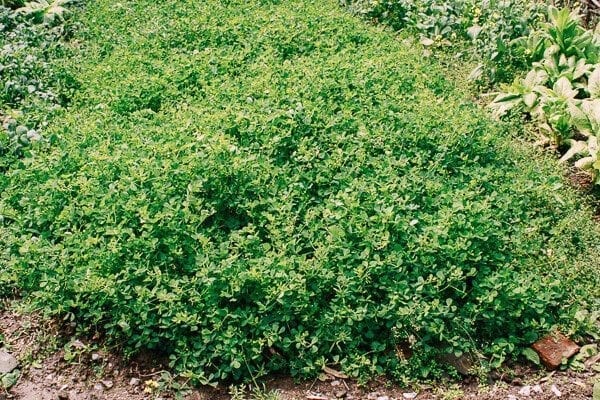
Recipe Instructions
Wash the cao tou (edible clover) three times in water, taking care to pick out any stray weeds or grass. Drain in a colander, and shake thoroughly to ensure that there is no standing water on the vegetables. This is an important step, because the clover will release quite a bit of liquid when stir-frying. Have salt, soy sauce and bai jiu all within reach before turning on the stove, since the stir-frying process will be very fast. Heat the oil in a wok until it just starts to smoke, and add the vegetables.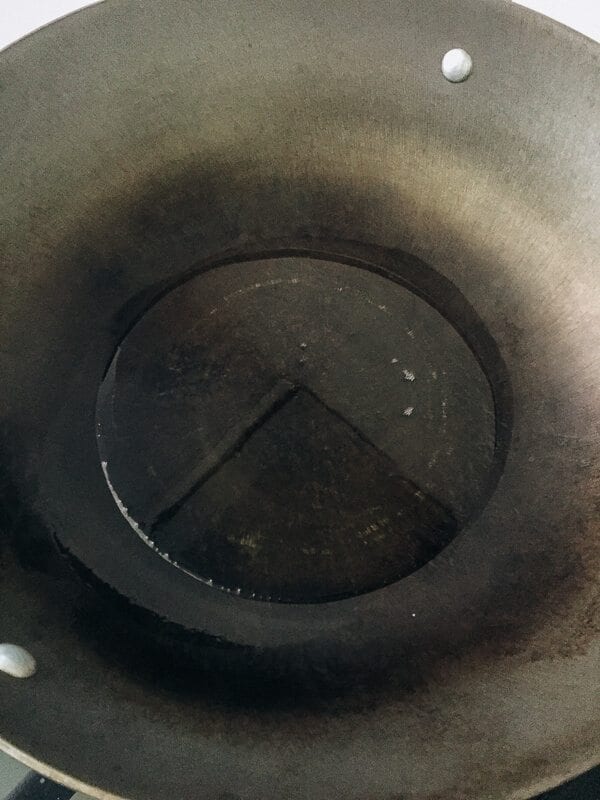
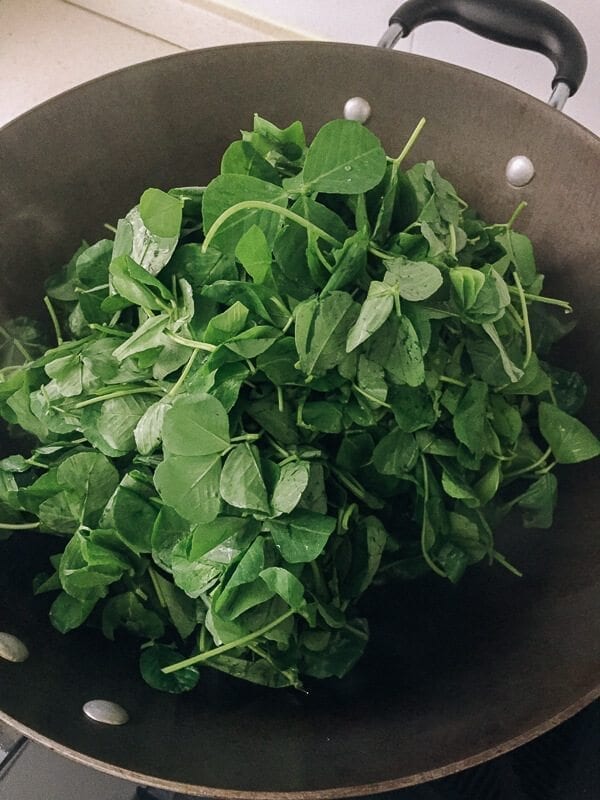 Quickly stir-fry with a scooping motion for 10 seconds, so the clover does not get scalded or burned. The vegetables will absorb the oil and wilt quickly.
Add the salt and soy sauce, and continue to stir until the seasonings are mixed in and all of the clover is wilted. This will only take another 15 seconds. Turn off the heat and add the Bai Jiu, lightly tossing it into the cooked clover.
It is important to plate the dish immediately after tossing in the bai jiu or if left in the wok or on the heat too long, the bai jiu will become bitter and ruin your lovely cao tou clover dish!
Quickly stir-fry with a scooping motion for 10 seconds, so the clover does not get scalded or burned. The vegetables will absorb the oil and wilt quickly.
Add the salt and soy sauce, and continue to stir until the seasonings are mixed in and all of the clover is wilted. This will only take another 15 seconds. Turn off the heat and add the Bai Jiu, lightly tossing it into the cooked clover.
It is important to plate the dish immediately after tossing in the bai jiu or if left in the wok or on the heat too long, the bai jiu will become bitter and ruin your lovely cao tou clover dish!
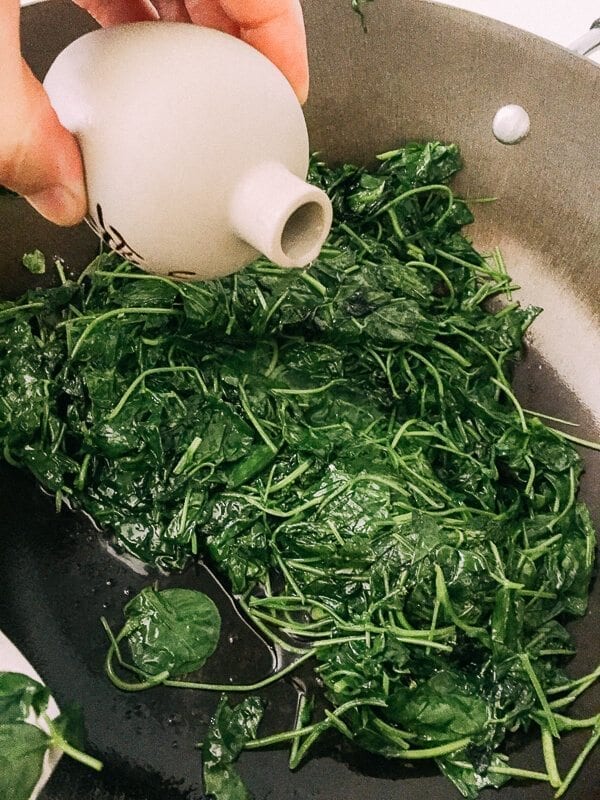 Serve immediately.
Serve immediately.
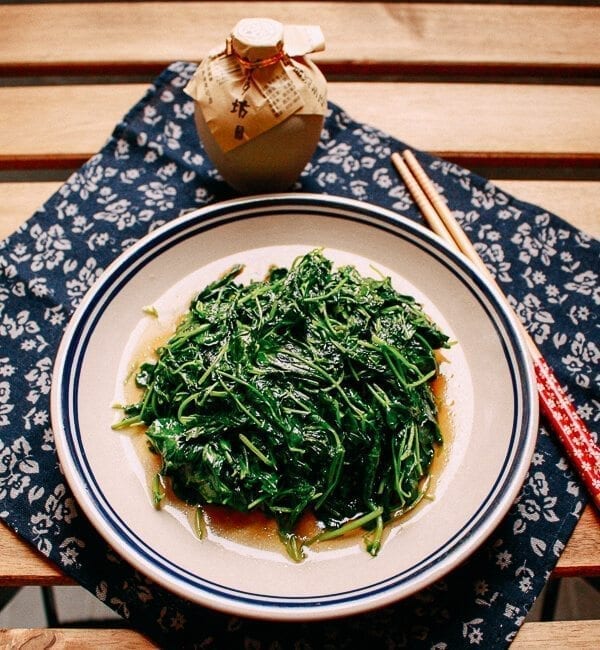
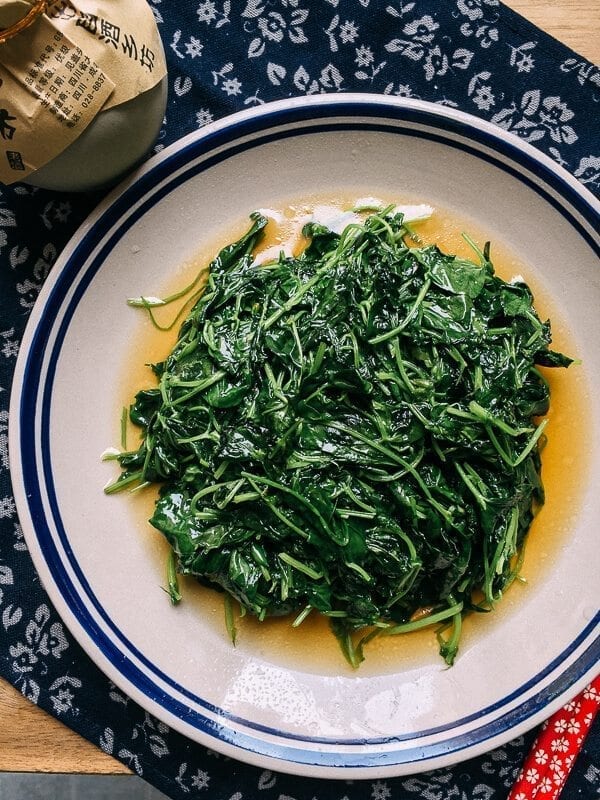
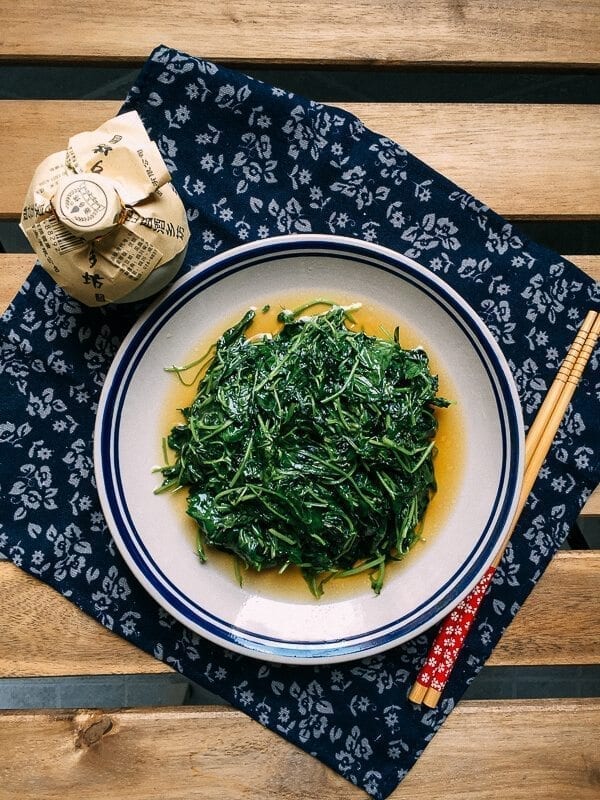
Recipe
Sautéed Edible Clover
Cao Tou, or edible clover, is one of the new wild vegetables we discovered on a visit to Shanghai. The clover has a sweet, slightly grassy flavor, and cooks very quickly!
Serves: 2 servings
Ingredients
Instructions
- Wash the clover three times in water, taking care to pick out any stray weeds or grass. Drain in a colander, and shake thoroughly to ensure that there is no standing water on the vegetables. This is an important step, because the clover will release quite a bit of liquid when stir-frying.
- Have salt, soy sauce and bai jiu all within reach before turning on the stove, since the stir-frying process will be very fast. Heat the oil in a wok until it just starts to smoke, and add the vegetables. Quickly stir-fry with a scooping motion for 10 seconds, so the clover does not get scalded or burned. The vegetables will absorb the oil and wilt quickly.
- Add the salt and soy sauce, and continue to stir until the seasonings are mixed in and all of the clover is wilted. This will only take another 15 seconds. Turn off the heat and add the bai jiu, lightly tossing it into the cooked clover. Serve immediately.
Nutrition Facts
Calories: 218kcal (11%) Carbohydrates: 4g (1%) Protein: 3g (6%) Fat: 21g (32%) Saturated Fat: 17g (85%) Sodium: 713mg (30%) Potassium: 633mg (18%) Fiber: 2g (8%) Sugar: 1g (1%) Vitamin A: 10633IU (213%) Vitamin C: 32mg (39%) Calcium: 112mg (11%) Iron: 3mg (17%)





